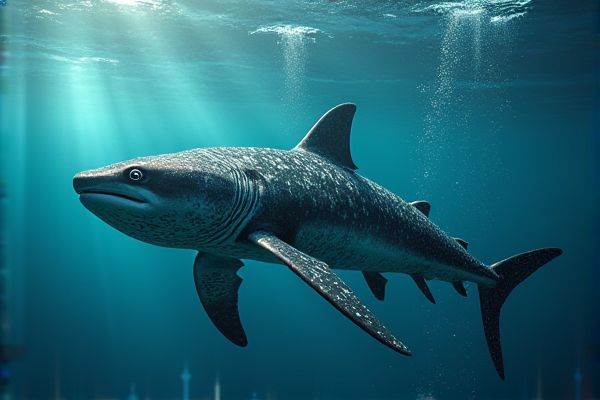
AI enhances marine research by automating data collection and analysis, allowing scientists to process vast amounts of information efficiently. Machine learning algorithms can identify patterns in marine ecosystems, predicting changes in biodiversity and fish populations. Autonomous underwater vehicles equipped with AI can gather real-time data on ocean conditions, promoting efficient monitoring of marine health. These advancements contribute to more informed conservation strategies and sustainable management of marine resources.
AI usage in marine research
Autonomous Underwater Vehicles (AUVs)
AI can enhance data collection and analysis in marine research, particularly through the use of Autonomous Underwater Vehicles (AUVs). These vehicles can perform complex tasks such as mapping ocean floors and monitoring marine ecosystems. The integration of AI algorithms allows for real-time decision-making, which increases the efficiency of research missions. Institutions like the Woods Hole Oceanographic Institution are exploring these technologies to better understand underwater environments.
Real-time Ocean Monitoring
AI usage in marine research enhances real-time ocean monitoring by enabling the analysis of large datasets quickly. For instance, algorithms can detect changes in temperature, salinity, and currents that could indicate environmental shifts. Institutions like the National Oceanic and Atmospheric Administration (NOAA) leverage AI to predict marine phenomena like harmful algal blooms. This capability may improve decision-making for conservation efforts and fisheries management, offering significant advantages.
Fish Population Analysis
AI can enhance fish population analysis by utilizing machine learning algorithms to identify patterns in large datasets collected from marine research. For example, institutions like NOAA employ such technologies to monitor fish stocks and assess their health. The ability to process vast amounts of data efficiently increases the chances of early detection of population declines. This can lead to more effective conservation strategies and sustainable fishing practices.
Marine Biodiversity Tracking
AI technology can enhance marine research by providing efficient tools for marine biodiversity tracking. For example, machine learning algorithms can analyze vast datasets from underwater sensors, improving species identification and distribution mapping. This can lead to better conservation strategies and resource management within marine ecosystems. The integration of AI tools in institutions like NOAA can significantly increase the accuracy of biodiversity assessments.
Climate Change Impact Assessment
AI technology has the potential to enhance marine research by analyzing vast datasets for patterns related to climate change. For example, institutions like the Oceanographic Institute can use AI-driven models to predict shifts in marine biodiversity. This approach may lead to more accurate assessments of the ecological impacts of climate change on oceanic systems. Such advancements could provide researchers with tools to develop targeted conservation strategies.
Ocean Currents and Weather Prediction
AI can enhance marine research by providing advanced modeling techniques for predicting ocean currents and their impacts on climate. Institutions like the National Oceanic and Atmospheric Administration (NOAA) utilize AI to analyze vast datasets, potentially improving weather forecasts. This technology can identify patterns in oceanic conditions that human analysts might overlook. As a result, more accurate predictions can inform maritime operations and disaster preparedness strategies.
Coral Reef Health Monitoring
AI has the potential to enhance marine research by providing advanced data analysis and real-time monitoring of coral reef health. Through the utilization of machine learning algorithms, researchers can identify patterns in coral bleaching events and assess biodiversity more accurately. Institutions like the Oceanographic Society could benefit from implementing AI-driven tools for efficient data collection and interpretation. The likelihood of improved conservation strategies increases as technology integrates with environmental science.
Underwater Habitat Mapping
AI can enhance underwater habitat mapping by analyzing large datasets from sonar and video footage. Tools like machine learning algorithms can identify specific marine species and their habitats with greater accuracy. This technology offers the potential to monitor ecological changes over time, aiding institutions like the NOAA in conservation efforts. By improving the precision of habitat assessments, AI may lead to more effective management strategies for marine resources.
Marine Pollution Detection
AI applications in marine research can enhance the detection of marine pollution by analyzing vast datasets to identify patterns and anomalies. For example, machine learning algorithms can process satellite imagery to spot oil spills or harmful algal blooms more efficiently than traditional methods. This technology offers the potential for quicker responses to environmental threats, possibly reducing damage to marine ecosystems. Institutions like NOAA are increasingly adopting AI to improve their monitoring and assessment capabilities in ocean health.
Maritime Security and Surveillance
The integration of AI in marine research offers the potential to enhance data analysis and prediction models for oceanic phenomena. In maritime security, AI systems can improve threat detection through real-time surveillance and anomaly identification. For instance, using AI algorithms in monitoring vessel movements can significantly reduce illegal fishing and smuggling activities. This technological advancement could lead to more effective governance of marine resources and improved safety of maritime operations.
 techknowy.com
techknowy.com